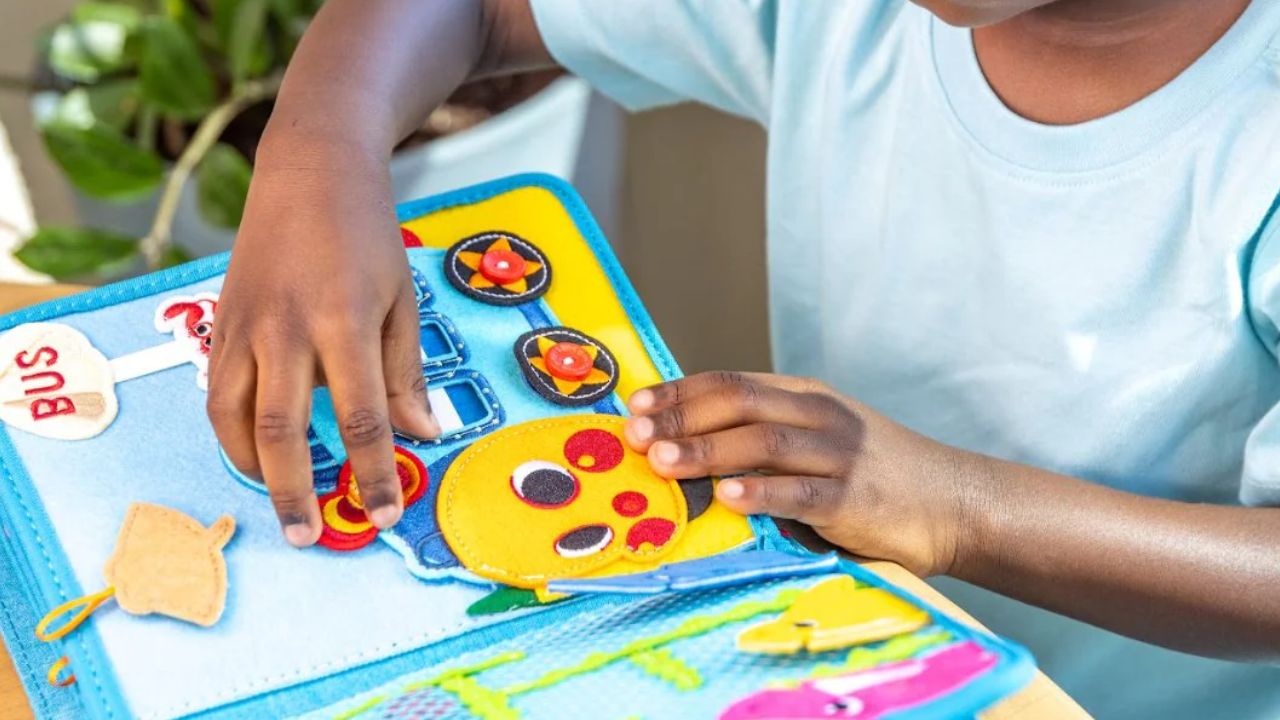Engaging the very young whilst teaching at the same time can be frustrating, but a fabric Busy book is simple, childlike, and fun. These fabric books, often filled with interactive activities like zippers, buttons, and matching games, are more than just toys—they’re educational tools.
To encourage active learning, they are designed to train toddlers and preschoolers to acquire prerequisite skills in an engaging and fun way. Whether at home or on the go, busy books are a perfect way to keep young minds active and growing. Continue reading to learn about the advantages of these busy books for toddlers and preschoolers.
Advantages of Using Fabric Busy Books for Children
These are some of the advantages that a young child may receive from the use of a fabric busy book.
1. Encourages Fine Motor Skill Development
Fabric busy books are packed with activities that require small hand movements, like buttoning, zipping, and tying. These tasks contribute to the development of more effective finger muscle and dexterity abilities in toddlers and preschoolers. These motor skills play a crucial role in subsequent tasks, such as writing, drawing, or using utensils. Thanks to the tactile nature of busy books, learning these skills is itself stimulating as practice becomes play. Also, children learn to be patient and good at coordination while performing each task.
2. Promotes Cognitive Development
Iced activity books contain clues, matching games, and other thinking activities that activate the child’s brain. These difficulties promote logical reasoning, recall, and mental visualization. When a child works with the book, he/she can learn how to use the rule of logic critically and make decisions autonomously. This kind of cognitive processing provides a strong basis for higher-level problem-solving abilities associated with maturation.
3. Encourages Independent Play
Perhaps the best feature of a fabric busy book is its capacity to develop independence. While most toys usually require the parents to be involved with the child, a busy book gives toddlers and preschoolers the freedom to explore at their own pace. All the activities in the book can be solved individually by children, which will, in turn, improve their problem-solving capabilities. This independence certainly confers a sense of confidence and provides parents with the opportunity to engage in other activities. A child happily engaged in a bustling book, engrossed in a story, is a demonstration of the effectiveness of self-directed learning.
4. Improves Concentration and Focus
Workbooks are ones in which the child has to focus on activities, such as sorting shapes, comparing colors, or stringing beads. These tasks provide some opportunity for toddlers and preschoolers to learn sustained attention, an ability that will serve them in school and in everyday life. Having a hands-on approach to the book retains their interest for a time longer than just watching TV, for example. With time, this trains them to have the attention they need for study and creativity.
5. Supports Sensory Exploration
The richness of texture, shape, and color of fabrics in busy books enchants toddlers’ and preschoolers’ senses. Feeling various fabrics, handling objects, and listening to clunks or snaps on velcro are fun for their sensory systems. Sensory exploration is an important factor in brain maturation, and it is through sensory exploration that children gain and process the world around them. These sensory-heavy experiences also make learning more pleasant and retentive.
6. Enhances Language Skills
Busy books generally have elements of a story, or the objects are labeled with words that can contribute to the development of vocabulary. While they recognize shapes, colors, and objects, they acquire new words without thinking. Also, the books can be used to facilitate dialog and promote language attainment among parents. This interactive method of learning words promotes the use of language and advances early literacy.
7. Sparks Creativity and Imagination
Original busy books typically involve open-ended activities, e.g., sorting the felt block elements to build scenes or relating objects to form a story. These imaginative tasks motivate children to be imaginative, a prerequisite for cognitive and affective development. For instance, a child may engage in pretending that the felt pieces in the book are a cast of characters in a story and develop their plot skills. Through the development of creative thinking, not only do these books provide us enjoyment, but they also promote creative thinking, which is a great asset for the future.
8. Offers Screen-Free Entertainment
In today’s digital age, reducing screen time is a priority for many parents. Busy books offer an active, intriguing substitute for electronic gadgets. Instead of being passive observers, children actively challenge situations and shape and interact with their environment. These books are ideal for traveling by car, in a waiting room, or on a quiet afternoon spent indoors. Providing a healthier version of entertainment, they enable children to grow in various skills without the overstimulation or risk that screen time can subject them to.
Conclusion
Fabric busy books are more than just an entertaining distraction—they are powerful tools for learning and development. Fine motor skills through language and creativity; these interactive books are used to help toddlers and preschoolers grow in many ways. They offer a hands-on, screen-free experience that maintains the interest of the children and supports their cognitive, emotional, and physical growth. Investing in a thriving book is, after all, an investment in your child’s future, combining play with education into one fine product.

